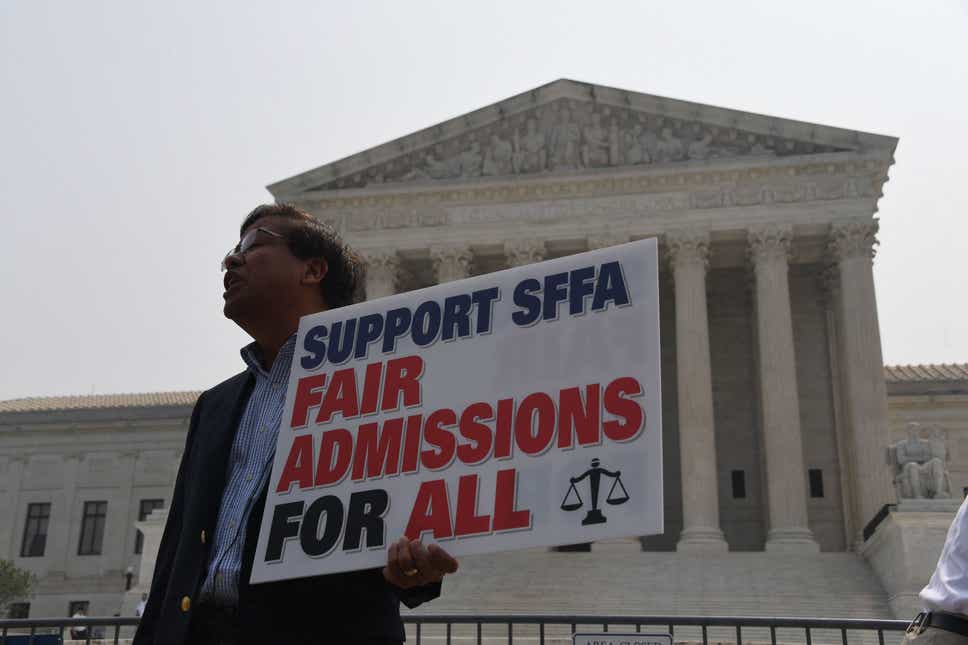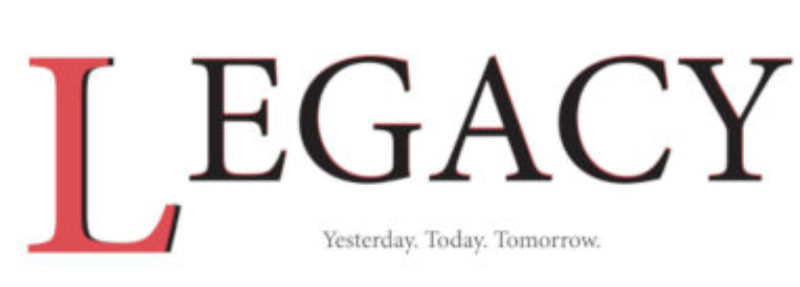By: Maria-Paula
The Supreme Court on June 29 ruled against affirmative action policies in higher learning institutions that have, in the past, racially discriminated against students. In two separate opinions, the court made decisions that overturn years of precedence against enrollment of the Black, Hispanic and Asian students in elite universities and colleges in the U.S.
In its judgement, the high court condemned the 1978 rulings that gave universities interest in seeking racial diversity on campus allowing them to consider people of color when choosing among their top de la crème applicants.
Even where race was considered with an intention to rectify past injustices and expand diversity, conservatives have remained pessimistic since the civil society laws and constitution prohibits segregation.
For years, affirmative action and abortion, have been targeted by the conservative legal movement and the court’s liberal rulings on these two major issues were shaken when former President Donald Trump and Republicans in the U.S. Senate appointed three new justices to their favor.
The two judgements from the conservative six justices, passed a ruling that the nation’s oldest private college, Harvard and the oldest state university, University of North Carolina, Chapel Hill were illegally discriminating students based on race. In the University of North Carolina case, justices voted 6-3 and 6-2 in Harvard’s case, with a ruling passed on them violating the 14th Amendment of the constitution by racially discriminating on applicants.
Before the Supreme Court’s vote last year to take up the cases, the lower courts rejected the lawsuits with judges arguing that the two universities had made careful and limited use of race in seeking a diverse class of new students.
The court’s three liberal justices, Ketanji Brown Jackson, Elena Kagan and Sonia Sotomayor, protested the decision by accusing the majority conservative justices of advancing racism and ignoring America’s history.
“Today, this court stands in the way and rolls back decades of precedent and momentous progress. The court cements a superficial rule of colorblindness as a constitutional principle in an endemically segregated society where race has always mattered and continues to matter,” wrote Justice Kagan and Sotomayor.
Justice Jackson, a former member of Harvard’s Board of Overseers, recused herself in the case against Harvard that contended its admission policy on discrimination against Asian American students.
Both Harvard and UNC have rejected the claims on racism and assert that such allegations have a possibility of negatively impacting the number of minority students on their campuses.
The ruling which might force universities and colleges to change their admission policies, still has no special consideration for students who have faced discrimination especially in the much sort medical and law schools.
Chief Justice John G. Roberts Jr. gave voice to the debate by declaring that the Constitution outlaw’s racial discrimination in the 237-page opinion emanating from lawsuits against Harvard University and the University of North Carolina.
“The entire point of the Equal Protection Clause is that treating someone differently because of their skin color is not like treating them differently because they are from a city or from a suburb, or because they play the violin poorly or well,” explained part of Chief Justice Roberts Jr. opinion.
However, there is speculation that the learning institutions are likely to focus on a passage near the end of Robert Jr. 40-page statement which read:
“Nothing in this opinion should be construed as prohibiting universities from considering an applicant’s discussion of how race affected his or her life, be it through discrimination, inspiration, or otherwise,” Roberts wrote. “A benefit to a student who overcame racial discrimination, for example, must be tied to that student’s courage and determination. Or a benefit to a student whose heritage or culture motivated him or her to assume a leadership role or attain a particular goal must be tied to that student’s unique ability to contribute to the university. In other words, the student must be treated based on his or her experiences as an individual — not on the basis of race.”
The National Student Clearing House recently reported a decline in higher education enrollments by 3.2% since the 2020 pandemic season influenced largely by the people of color. With a decline of 9.4% in public universities and colleges, the Black students’ numbers have dropped by almost 7%.
With a possibility of the rulings limitation to California, the California State University and the University of California systems have since 1996 under Proposition 209 of California through the ballot prohibited the use of race as a factor in admissions. This saw a drop from 7% to 3% with approximately 10,000 Latino and Black learners deregistration from UCLA and UC Berkeley registers. California voters rejected through a vote in 2020, a measure meant to overturn the 1996 ban.
Harvard’s case has also extended the ruling to private universities and colleges, although nine other states including Washington, Michigan, Idaho, Nebraska, Arizona, New Hampshire, Oklahoma and Florida, have prohibited race-driven admissions policies at state learning institutions.
President Joe Biden in response to the Supreme Court’s decision encouraged the Department of Education to adopt practices that promote diversity and inclusivity. He urged colleges and universities to consider students in regards to factors like adversity and diversity of race and financial capability to ensure uniqueness in their student bodies and represent a true America.
“I strongly, strongly disagree with the court’s decision. Discrimination still exists in America. Today’s decision does not change that,” said Biden at the White House. “We need a new path forward, a path consistent with the law that protects diversity and expands opportunity.”
Those precedents had remained under challenge from conservatives, who argued that the Constitution and the civil rights law prohibited discrimination based on race, even where the consideration of race was intended to increase diversity and correct past injustices. Barrack Obama and Michelle Obama in their remarks commended the strides made so far in a bid to an all-inclusive American higher education system.
“Like any policy, affirmative action wasn’t perfect but it allowed generations of students like Michelle and me to prove we belonged,” read Obamas statement. “Now it’s up to all of us to give young people the opportunities they deserve and to help students everywhere to benefit from new perspectives.”
Being one of the few Black students in her campus, Michelle says she had worked hard and was proud to have attained entry in one of the prestigious universities in the US. She unfortunately could not shake off the shadow of people’s opinions on her and other people of color getting there as a result of affirmative action.
“Today, my heart breaks for any young person out there who’s wondering what their future holds — and what kinds of chances will be open to them. And while I know the strength and grit that lies inside kids who have always had to sweat a little more to climb the same ladders, I hope and I pray that the rest of us are willing to sweat a little, too. Today is a reminder that we’ve got to do the work not just to enact policies that reflect our values of equity and fairness, but to truly make those values real in all of our schools, workplaces, and neighborhoods,” wrote Michelle.
Dr. W. Franklyn Richardson, chairman of the Conference of National Black Churches (CNBC), also issued the following statement in response to the Supreme Court ruling to end affirmative action in higher education. He added that the policy has long been a lifeline to prospective Black students who were able to pursue their dreams.
“The Black Church is repulsed by the Supreme Court’s decision to end affirmative action. The conservative makeup of the bench has turned on the fundamental principles of the constitution. Higher education should be a right for Black Americans to equally climb the opportunity ladder, and affirmative action was in place to keep it steady and secure,” said Richardson. “Our response must be seen and felt in November – not only this year but in the years to come. We must not get weary. We must not be discouraged. We must take this assault as an occasion to renew our resolve. Ours is an intergenerational fight. It is a continuous journey toward making this country fulfill its declared intention of equality for all.”
The Federation of Protestant Welfare Agencies (FPWA) through its CEO Jennifer Jones Austin released the following statement in response to the Supreme Court’s ruling striking down affirmative action in college admissions. This comes as FPWA’s latest analysis of civil rights progress since the 1963 March on Washington shows persisting racial inequities in education and economic-related outcomes. Funding disparities between schools with majority Black students versus majority white students remain especially stark, and even with comparable or identical college degrees, Black people make an average 20% less each year.
“As an organization committed to dismantling systemic racism, FPWA denounces the Supreme Court’s decision to strike down affirmative action in the college admissions process. Since Affirmative Action’s inception, opponents have ignored the reason for race to be a consideration—to responsively acknowledge racism and how it impacts people of color’s lives, and particularly their educational experiences and lifelong opportunities. They have attacked the policy for being anti-meritocratic and unfair to deserving students. Today’s Supreme Court’s decision embraces their false narrative and willfully disregards persisting structural racism and resulting intergenerational inequality and inequity.
FPWA will continue working to dismantle structural and institutional barriers that have persisted for over 400 years in America, and will fight to advance policies that promote racial and economic equity.”
Students for Fair Admissions, a group created by financier Edward Blum also accused Harvard for discrimination against Asia American applicants and filed, a separate lawsuit against UNC for similar discrimination. He termed the Supreme Court out come a long-sought victory.
“The polarizing, stigmatizing and unfair jurisprudence that allowed colleges and universities to use a student’s race and ethnicity as a factor to admit or reject them has been overruled,” quoted Blum.
Any individuals or organizations looking to join hands for an America beyond skin color can work with the below organizations for an all-inclusive society:
· UNCF
· Hispanic Scholarship Fund
· APIA Scholars
· American Indian College Fund
· TheDream.US
· Thurgood Marshall College Fund
· DC CAP
· Hope Chicago
Supreme Court overturns affirmative action policies in universities



